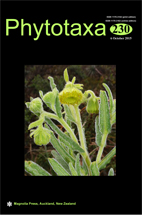Abstract
The Australian spinifex grasses comprise an endemic radiation (69+ species) of morphologically and ecologically distinctive plants. Many species are long-lived hummock-forming perennials that bristle with needle-like leaves. Ecologically, they resemble sclerophyll shrubs rather than grasses (Rice & Westoby 1999). They are widespread in dry communities, especially the eremaean and monsoonal (savannah) biomes, where they often dominate the landscape, particularly on oligotrophic (sandy and skeletal) substrates. Across nearly one-third of the continent, spinifex plays a dominant role in structuring communities and their fire regimes, directly influencing the habitat dynamics of many animals, including endangered species (Allan & Southgate 2002, Brown et al. 2009, Dickman et al. 2011).

